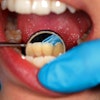A series of recent studies has found gutta-percha stronger and more resistant to leaks than Resilon.
Researchers from Ghent University compared the capillary flow porometry of horizontal bovine root sections filled with either gutta-percha (with AH 26 by Dentsply) or Resilon (with Epiphany SE by Pentron Clinical Technologies), and published their findings in the October 2009 issue of the International Journal of Endodontics (Vol. 42:10, pp. 884-892).
Over a six-month period, they found that Resilon performed better in the short term, but that the seal of the gutta-percha improved over time while the seal of Resilon deteriorated.
Gutta-percha also performed better than Resilon in a July 2009 study in which researchers from the University of Zurich measured fluid flow (Int Endod J, Vol. 40:9, pp. 722-729). "Initially, Resilon/Epiphany root fillings prevented fluid movement to the same degree as gutta-percha/AH Plus counterparts, but showed more fluid movement when tested at 16 months," they reported.
In a July 2009 Journal of Endodontics (Vol. 35:7, pp 1048-1050) study, researchers at three Rio de Janeiro universities used a universal testing machine to push the obturation materials out of root slices. They concluded that gutta-percha was much stronger than both Epiphany and Epiphany SE.
Resilon had its best performance against gutta-percha in a August 2009 study on which material resists bacterial leakage (JOE, Vol. 109:1, pp. 292-296).
Researchers from the University of Iowa divided 70 extracted maxillary incisors into four groups. For group one, they used lateral compaction to seal the canals with gutta-percha. For group two, they used lateral compaction to seal with Resilon. For group three, they used continuous wave compaction to seal with gutta-percha, and they used continuous wave compaction to seal with Resilon for group four.
Upper chambers held a suspension of endodontic pathogens, while apices were suspended in the lower chamber. They measured leakage daily for 40 days.
The median number of days to leakage was 16 for group one, 15 for group two, 11 for group three, and 25 for group four.
There was no statistically significant (p = 0.93) difference in the time to leakage, suggesting that the sealers were equally effective by this measure, the researchers wrote.
Copyright © 2009 DrBicuspid.com















